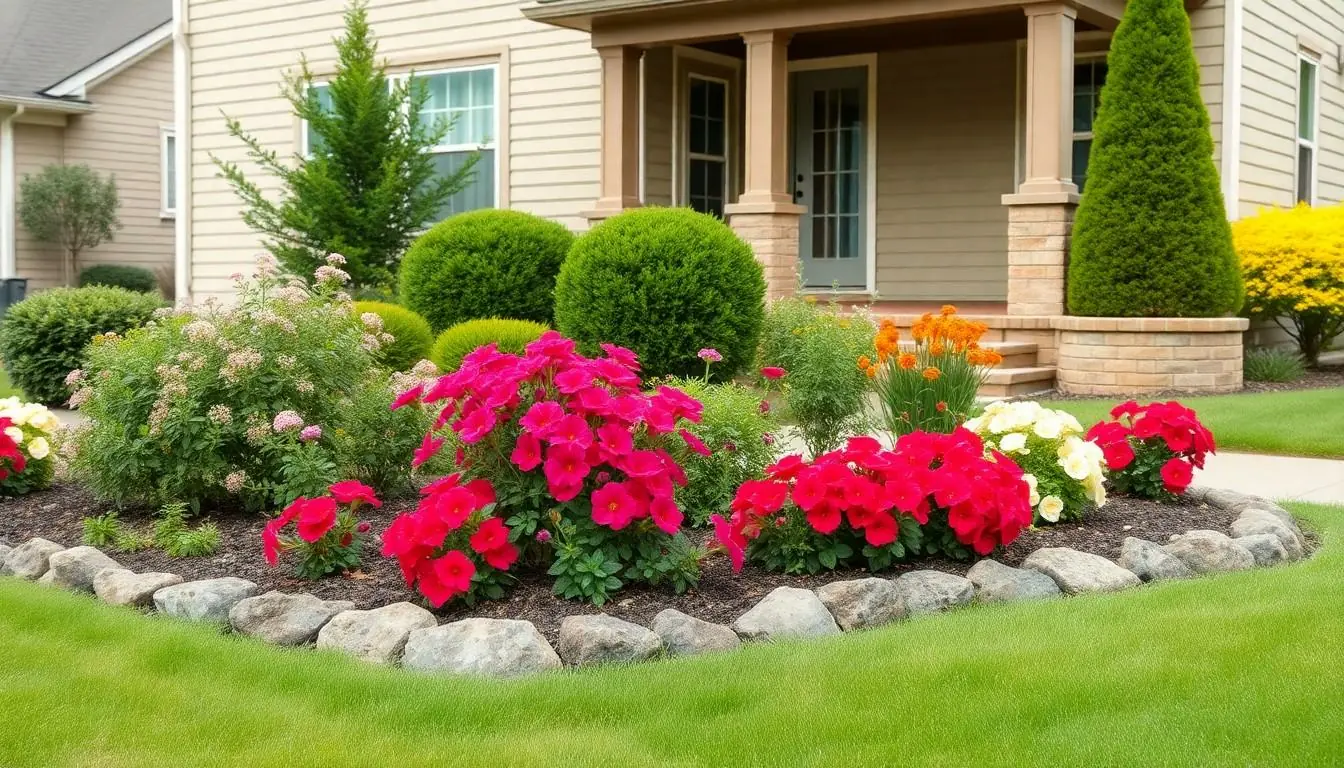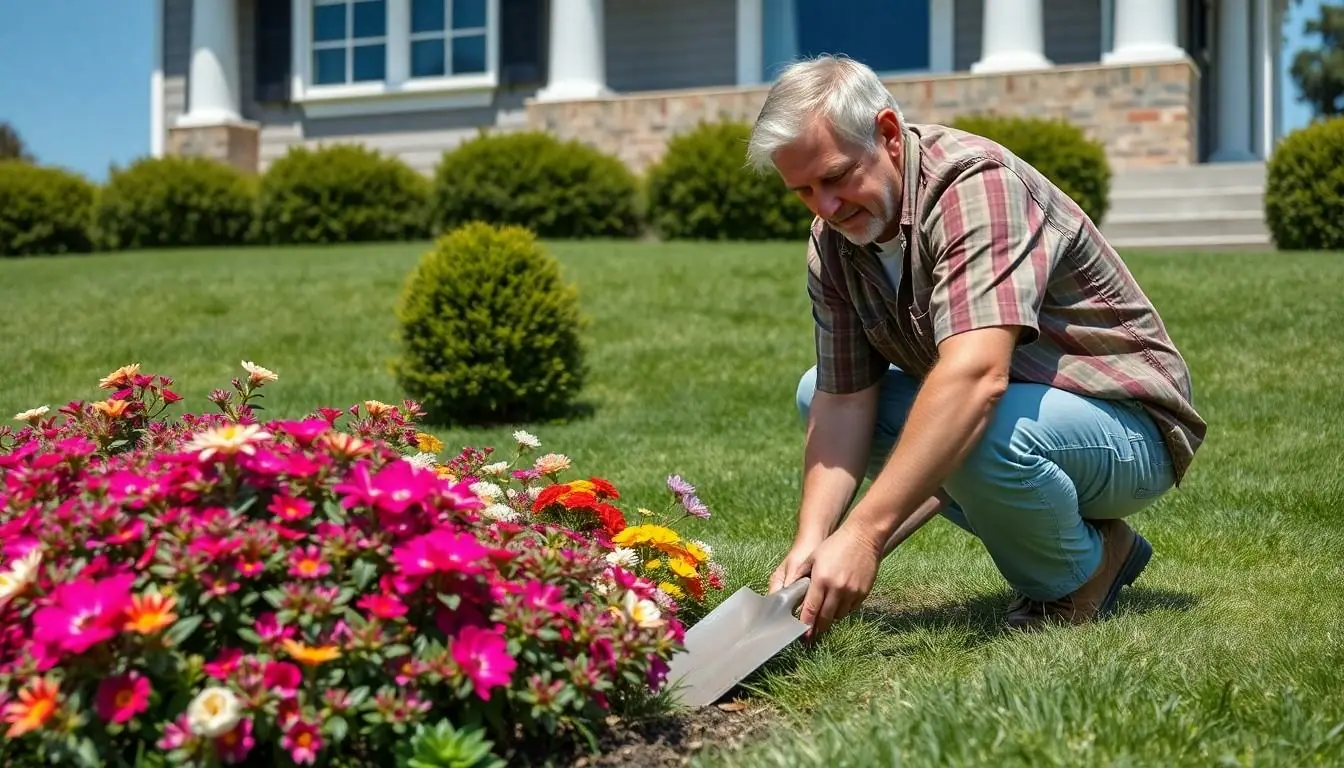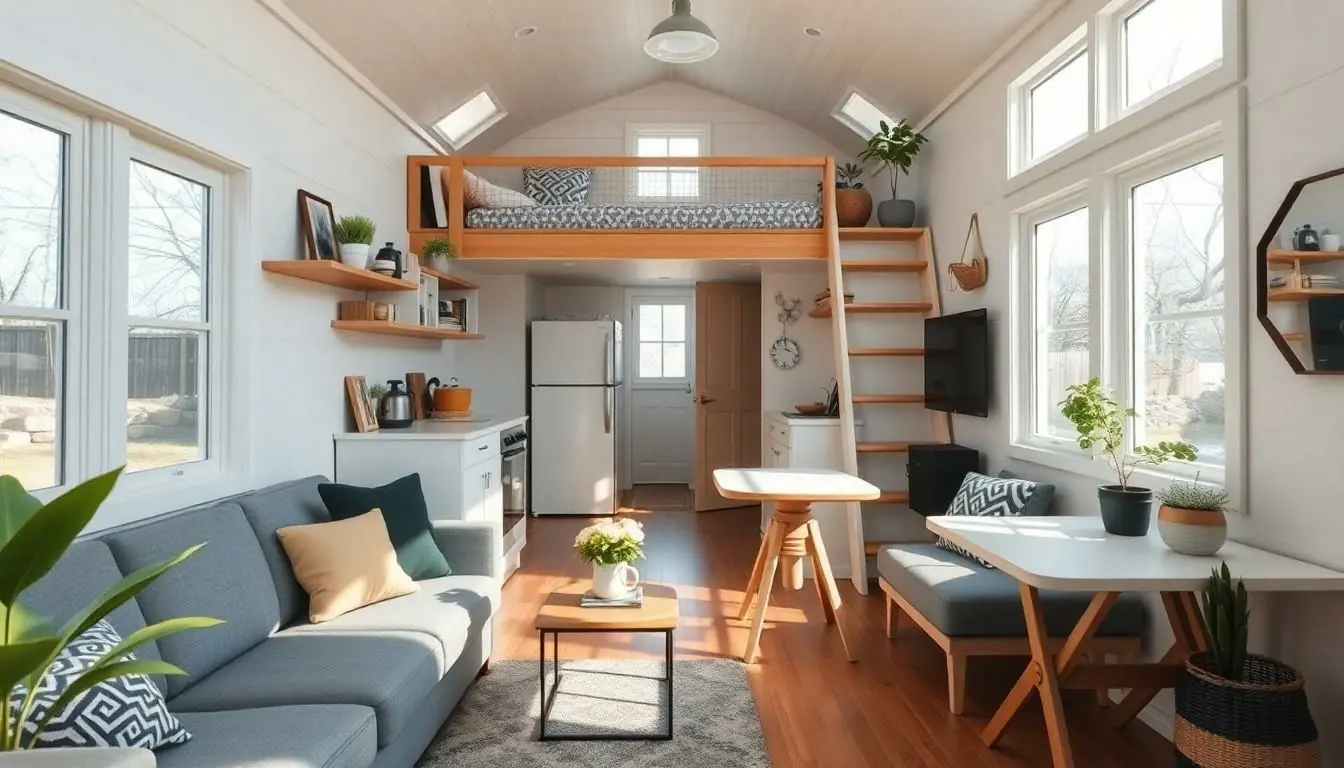A well-landscaped foundation can do wonders for a home’s curb appeal, but it’s not just about looks. Proper landscaping around the house foundation can protect it from water damage and pests, making it a crucial investment. Think of it as the stylish armor your home deserves.
Imagine a lush garden framing your home, where flowers bloom and the grass is always greener. But wait—before you start planting daisies like you’re auditioning for a gardening show, it’s essential to consider factors like drainage and soil type. After all, nobody wants their beautiful flowers to turn into a swampy disaster. With the right approach, landscaping can be both practical and pretty, ensuring your house stands tall and proud for years to come.
Table of Contents
ToggleImportance Of Landscaping Around House Foundation
Landscaping around the house foundation plays a crucial role in protecting the home from water damage. Proper drainage ensures that water flows away from the foundation, which prevents erosion and reduces the risk of flooding. Soil type also influences how water is absorbed, affecting moisture levels around the foundation.
Creating a barrier with plants can deter pests from accessing the home. Certain shrubs and flowers act as natural repellents, making it less likely for insects to invade. Choosing native plants, which are more adaptable to local conditions, promotes healthy growth while minimizing maintenance.
Enhancing curb appeal is another benefit of thoughtful landscaping. A well-designed landscape draws attention to the home’s architecture and creates an inviting atmosphere. Colorful flowers, neatly trimmed shrubs, and strategically placed hardscapes contribute to a visually appealing yard.
Landscaping can also improve air quality around the home. Plants absorb carbon dioxide and release oxygen, contributing to a healthier outdoor environment. Incorporating trees provides shade, which can help regulate home temperature and reduce energy costs.
Investing time and resources into landscaping can increase property value. Homes with well-maintained landscapes often attract higher offers because buyers perceive them as more appealing. According to the National Association of Realtors, attractive landscaping can increase home value by 5 to 15 percent.
Finalizing design plans ensures that all elements work harmoniously. Considering factors like sunlight, wind patterns, and seasonal changes helps in selecting the best plants for the location. Adjustments to the landscape can enhance functionality while preserving the home’s integrity.
Benefits Of Effective Landscaping

Effective landscaping around a house foundation offers significant advantages, enhancing both aesthetics and functionality.
Improved Curb Appeal
Enhanced curb appeal attracts attention and creates a welcoming atmosphere. Homes with well-designed landscaping draw potential buyers with their visual appeal. According to the National Association of Realtors, attractive landscaping can raise a home’s value by 5 to 15 percent. Vibrant flowers and neatly arranged shrubs highlight architectural features and provide an inviting approach. Seasonal plants add variety, ensuring beauty throughout the year. In addition to increasing property values, high-quality landscaping can improve neighborhood pride and community attractiveness.
Protection Against Erosion
Erosion poses a serious threat to home foundations, often caused by improper water drainage. Strategically placed plants and ground cover can stabilize soil and prevent washouts. Native grasses and shrubs are particularly effective in anchoring soil with their root systems. When rainfall occurs, these plants help absorb excess water, directing it away from the house. This proactive approach reduces the need for costly repairs associated with foundation damage. By maintaining healthy landscapes, homeowners can effectively manage drainage and enhance the resilience of their home against environmental factors.
Landscaping Techniques For House Foundation
Effective landscaping techniques enhance the home’s foundation while providing aesthetic appeal and protection. Prioritizing proper plant selection and mulching contributes significantly to a sustainable foundation landscape.
Plant Selection
Choosing the right plants proves crucial for foundation landscaping. Native shrubs, flowers, and grasses establish strong root systems that stabilize soil effectively. Opting for drought-resistant species minimizes water usage, while pest-repelling plants deter unwanted insects. Selecting low-growing varieties ensures no obstruction to the home’s view and maintains a clean appearance. Additionally, spacing plants adequately allows for air circulation, reducing the risk of mildew and other moisture-related issues. Consideration of sunlight, soil type, and local climate helps ensure the plants thrive, further enhancing the foundation’s resilience.
Mulching Considerations
Utilizing mulch around the foundation offers several benefits. Organic mulch types, such as wood chips and straw, improve soil structure over time while retaining moisture during dry spells. Applying a 2 to 4-inch layer provides insulation, protecting roots from temperature extremes. Choosing mulch colors that complement the home’s exterior enhances visual appeal. Regularly maintaining mulch, replacing it as needed, prevents weed growth and promotes a tidy appearance. Proper mulch application also aids in effective drainage, directing water away from the foundation, thereby reducing erosion risks and protecting the home from potential flooding.
Common Mistakes To Avoid
Landscaping can enhance a home’s foundation, but certain mistakes can lead to serious issues. Awareness of these pitfalls helps in creating a functional and visually appealing landscape.
Overwatering
Excessive watering often leads to foundation problems. When plants receive too much water, the soil becomes saturated, increasing the risk of erosion around the foundation. Erosion can cause water to pool, leading to structural damage over time. Homeowners should monitor their watering schedules and adjust based on rainfall to prevent overwatering. Utilizing rain gauges can provide insight into how much water the landscape requires. Implementing a well-planned irrigation system helps control moisture levels, ensuring proper drainage and long-term stability.
Choosing Invasive Plants
Invasive plants can disrupt local ecosystems and create hidden burdens for homeowners. These species often spread aggressively, competing for nutrients and water needed by desirable plants. Selecting invasive varieties leads to potential damage to the landscape and neighboring properties. Homeowners should prioritize native plants known for their resilience, drought resistance, and pest-repelling qualities. Native shrubs and flowers help maintain healthier ecosystems while supporting local wildlife. Researching local flora can guide homeowners in making informed choices about plant selections that positively impact their landscapes.
Landscaping around a home’s foundation is a vital aspect of property maintenance and enhancement. By choosing the right plants and implementing effective drainage solutions homeowners can protect their foundations while boosting curb appeal. Thoughtful landscaping not only prevents erosion and pests but also creates a welcoming environment that elevates neighborhood pride.
Investing time and resources into proper landscaping pays off in increased property value and aesthetic appeal. With careful planning and regular maintenance homeowners can achieve a beautiful landscape that complements their home and safeguards it for years to come.







